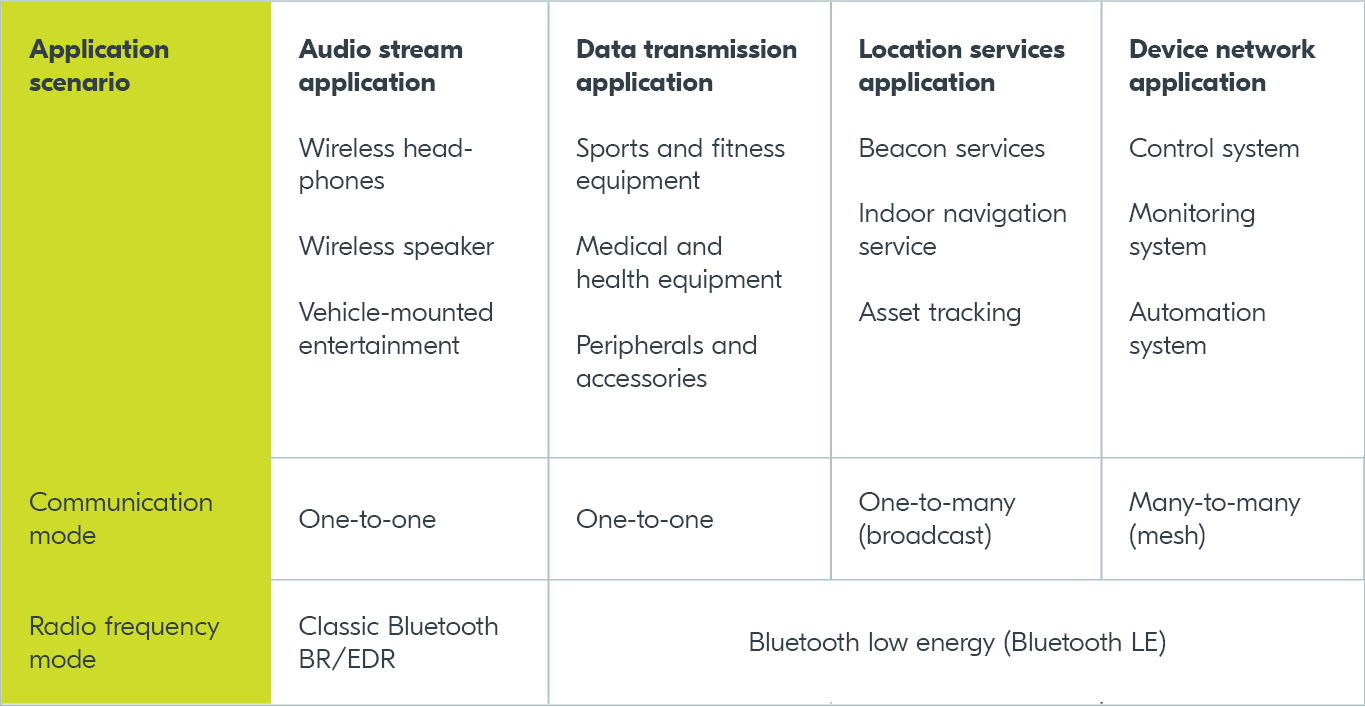- Home
- Symmetry Blog
- Classic Bluetooth and Bluetooth Low Energy
From Nordic: The Difference Between Classic Bluetooth and Bluetooth Low Energy
About Symmetry Electronics
Established in 1998, Symmetry Electronics, a Division of Braemac, is a global distributor of electronic components and systems. Combining premier components and comprehensive value-added services with an expert in-house engineering team, Symmetry supports engineers in the design, development, and deployment of a broad range of connected technologies.
Exponential Technology Group Member
Acquired by Berkshire Hathaway company TTI, Inc. in 2017, Symmetry Electronics is a proud Exponential Technology Group (XTG) member. A collection of specialty semiconductor distributors and engineering design firms, XTG stands alongside industry leaders TTI Inc., Mouser Electronics, and Sager Electronics. Together, we provide a united global supply chain solution with the shared mission of simplifying engineering, offering affordable technologies, and assisting engineers in accelerating time to market. For more information about XTG, visit www.xponentialgroup.com.
The naming conventions for Bluetooth technologies have changed over the years and still cause confusion to this day. Here is everything you need to know.
Understanding the differences between classic Bluetooth and Bluetooth Low Energy is a critical first step for any Bluetooth development project. Why do two partly-incompatible protocols share a name? What happened to Bluetooth Smart? Which protocol is best for your application? These are common questions from people new to the world of Bluetooth.
In order to fully understand the situation today, we must first understand how we got here.
The history of Bluetooth releases
When we talk of Bluetooth before 2010, we refer to classic Bluetooth as the low energy variant didn’t yet exist. Classic Bluetooth is proposed and maintained by the Bluetooth Special Interest Group (SIG).
Each time Bluetooth SIG releases a new version of the specification, it states a version number. Bluetooth 1.0 was released around 1999, version 2.0 in 2004, version 2.1 in 2007, and version 3.0 in 2009. If you open the Bluetooth 3.0 specifications, you will find that classic Bluetooth includes three modes: BR, EDR and HS (AMP).
The introduction of Low Energy
In short, any technology released by SIG can be called Bluetooth technology. In 2010, Bluetooth SIG merged with Wibree. The wireless technology was founded by Nokia, Nordic Semiconductor and other parties, with the aim of finding a lower-power wireless communication technology for mobile phone peripherals.
The Bluetooth SIG renamed the low-power wireless technology ‘Bluetooth Low Energy’ (Bluetooth LE). In 2010, the Bluetooth 4.0 specification included both classic Bluetooth and Bluetooth LE.
Actually, the term ‘classic Bluetooth’ isn’t completely accurate. In the Bluetooth 4.0 specification, the SIG defined the four Bluetooth controller technologies: BR, EDR, AMP and LE.
That means there is only one Bluetooth, which is the SIG's Bluetooth. The Bluetooth technology itself includes four types: BR, EDR, AMP and LE. Since LE was proposed in 2010 and is relatively new, people call the former BR/EDR/AMP technology ‘classic Bluetooth’ technology for convenience.
Don’t make the mistake of thinking that Bluetooth only has the LE mode after Bluetooth 4.0!
Not so smart
Initially, the SIG promoted Bluetooth LE as ‘Bluetooth Smart’ to distinguish it from the classic version, which used the standalone term ‘Bluetooth’. Also, ‘Bluetooth Smart ready’ was used to represent the dual-mode Bluetooth that would support both variants.
Instead of spreading the brand and bringing clarity, the naming confused both consumers and developers. SIG then decided to stop using these names and bring everything under the Bluetooth 4.0 umbrella.
This means there are a lot of publicity materials out in the market featuring the now defunct names Bluetooth Smart and Bluetooth Smart ready.
Different Bluetooth for different applications
The Bluetooth 4.1/4.2/5.0 released by SIG includes both Bluetooth Low Energy and classic Bluetooth. So when developing Bluetooth applications, you must be clear which version to use as they work differently.
Generally speaking, classic Bluetooth is mainly used for audio such as wireless telephone connections, wireless headphones and wireless speakers. Bluetooth Low Energy is more often seen in wearable devices, smart IoT devices, fitness monitoring equipment, and battery-powered accessories such as a keyboard. Of course, classic Bluetooth can also be powered by batteries, but LE's power requirements are lower. In some cases LE devices can even be powered by button batteries.
This table summarises typical applications (click on pic for larger version):
It’s important to note that each mode has different physical layer modulation and demodulation methods. This means that Bluetooth LE and classic Bluetooth devices cannot communicate with each other. If the master device is a Bluetooth LE device, the slave device must also be a Bluetooth LE device.
Smartphones can work with both
That said, there is a dual-mode Bluetooth device in the market, which supports both Bluetooth LE and classic Bluetooth. Cell phones are the most common example. Most modern smartphones can communicate with both classic and LE devices.
To achieve this, smartphones use a time-sharing mechanism to communicate using both Bluetooth modes. Smartphones allow dual-mode Bluetooth chips to continuously switch between modes to support both Bluetooth LE devices and classic Bluetooth devices.
Whether it’s Bluetooth LE, classic Bluetooth or dual-mode Bluetooth solutions, fully understanding and appreciating the differences between them is an important step in choosing the most suitable solution for your IoT project.

